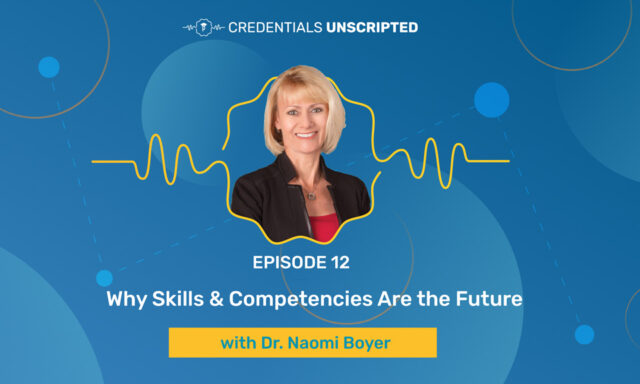
Pathways
Why Skills & Competencies Are the Future
History and common wisdom says that college students tend to come from a suburban upbringing, and head straight to university after high school. The data tells a very different story. A majority of today’s students—the traditional students—would have been considered non-traditional only a few years ago. They’re taking gap years, starting businesses and families, and generally getting a highly tailored post-secondary education when they need it.
Demographics are shifting in many ways. For example, according to the Lumina Foundation, enrollment among African Americans rose 72 percent from the mid-1990s through 2012, while Hispanic enrollment tripled over the same period. Even more telling; 56 percent of students surveyed work while attending school, with roughly half of first-year enrollees living at or below the federal poverty line. Another 38 percent don’t enter school until after age 25.1
Of course 18-year olds still head off to college, but they arrive to very different demographics than did their parents or the generations before. Why aren’t Chief Admissions Officers waking up to this reality and doing more to help these supposedly “non-traditional” learners succeed in higher education?
Different paths
One answer could be is that expectations for college are changing as fast as schools are changing the makeup of their enrollments. For example, the rising costs of a post-secondary education means that students and their parents are less likely to commit to schools that don’t at least have a plan to connect the dots between education and career.
Rising interest in alternative education is also a problem. Enterprising students who take a gap year, had children, or spent their early 20s building a business are not only open to but actually forging different educational pathways, in some cases earning practical certifications to advance their careers, working the job in off hours or taking classes on weekends. Among post-secondary options, community college has proven to be particularly popular with non-traditional students. Lumina’s data finds that nearly half of all undergraduate students attend a two-year alternative rather than skip straight to a four-year school.
Can you blame them? Members of the 2016 graduating class exited school with a degree they financed and are $37,173 in debt, on average, according to data from researcher Mark Kantrowitz. Members of the 2015 graduating class left school with an average of $35,051 owed.2
Recognize that some learners, to keep costs down, may opt for community college or professional certification programs, or Massive Open Online Courses (MOOCs). We also need to make it easy for students to get full credit for the work they’ve done elsewhere when transferring into a school. The last thing an eager learner needs is artificial roadblocks to success in their academic career, and only underscores the importance of a Transfer Student’s Bill of Rights.
Different students, different needs
Students looking to avoid the long-term pain of loans usually seek financial aid, but there’s less of it to go around now. Two recent reports from the College Board find that the net cost of college after accounting for grants, scholarships, and tax credits is rising because the so-called “sticker price” of a post-secondary education is rising faster than related increases in grant aid.
For example, average net tuition and fees at private, nonprofit colleges rose to $14,220 this fall from $13,340 last year at this time, when adjusting for inflation.3 The resulting 6.6 percent increase is more than double the average historical rate of inflation in the U.S. (3 percent) and over 16 times the annual increase in median family income. Institutions are often making it tougher to attract the learners most interested in spending on a post-secondary education.
Why not address the issue by including relevant scholarship and grant information when sending out recruiting mailers? Even if a school can’t offer a guarantee to prospective students, proactively providing insight and guidance for securing aid would be a welcome change for learners too often left to wonder what might be. And a lot of money goes unclaimed as a result; NerdScholar estimated the value of eligible but unused federal Pell grants at $2.9 billion following the 2014 school year.4
What to do now
We can come together to do a better job of serving the growing number of non-traditional learners in our midst, starting with using technology to find better schools and scholarship opportunities for students—whatever their age, history, or stage of academic journey. Coding electronic transcripts and certifications with machine-readable data for later analysis is a good start, and it’s something we’re already working on at Parchment.
No one who’s been an educator or who’s had the satisfaction of finishing an advanced degree will dispute the value of post-secondary education. The problem is there are too many starters and not enough finishers: 36 million Americans in the workforce today attended some college but never graduated with a degree.
We can get to work fixing this problem now, but first we need to recognize that our notion of the stereotypical college student is long outdated. Today’s future all-stars will take winding, uncommon paths to get the right credentials, and they’ll need relevant financial aid to go the distance. We can use technology to put students on the right path, right from the start.
SOURCING
